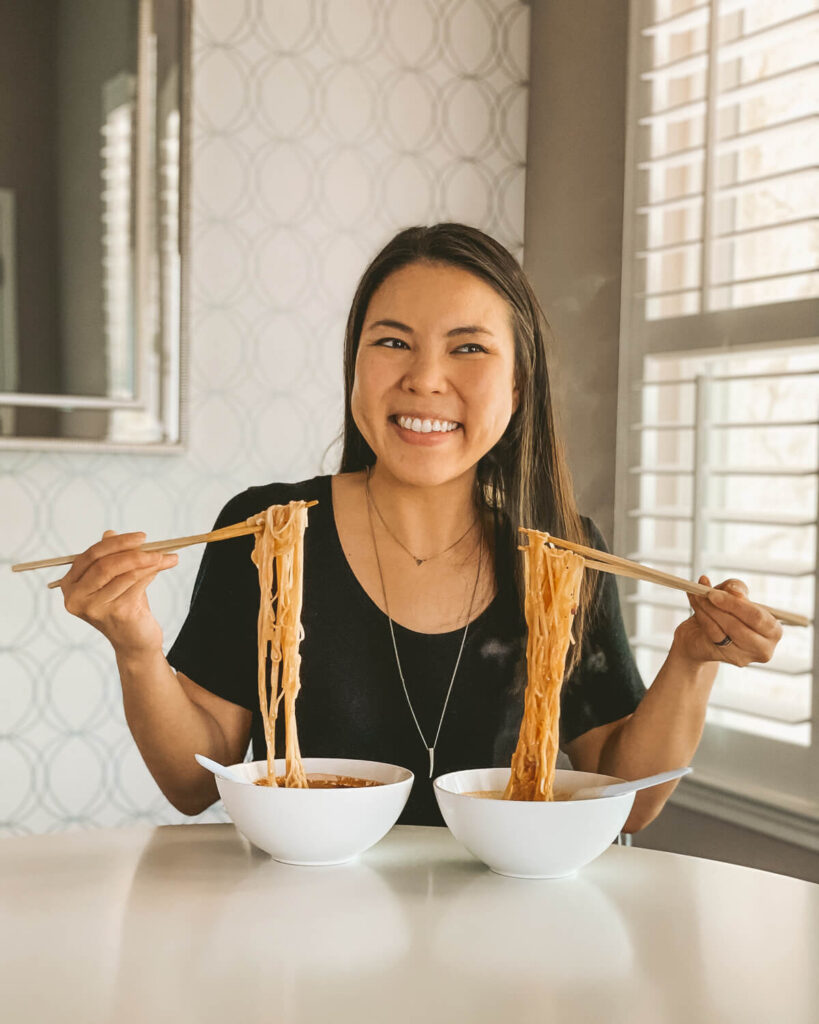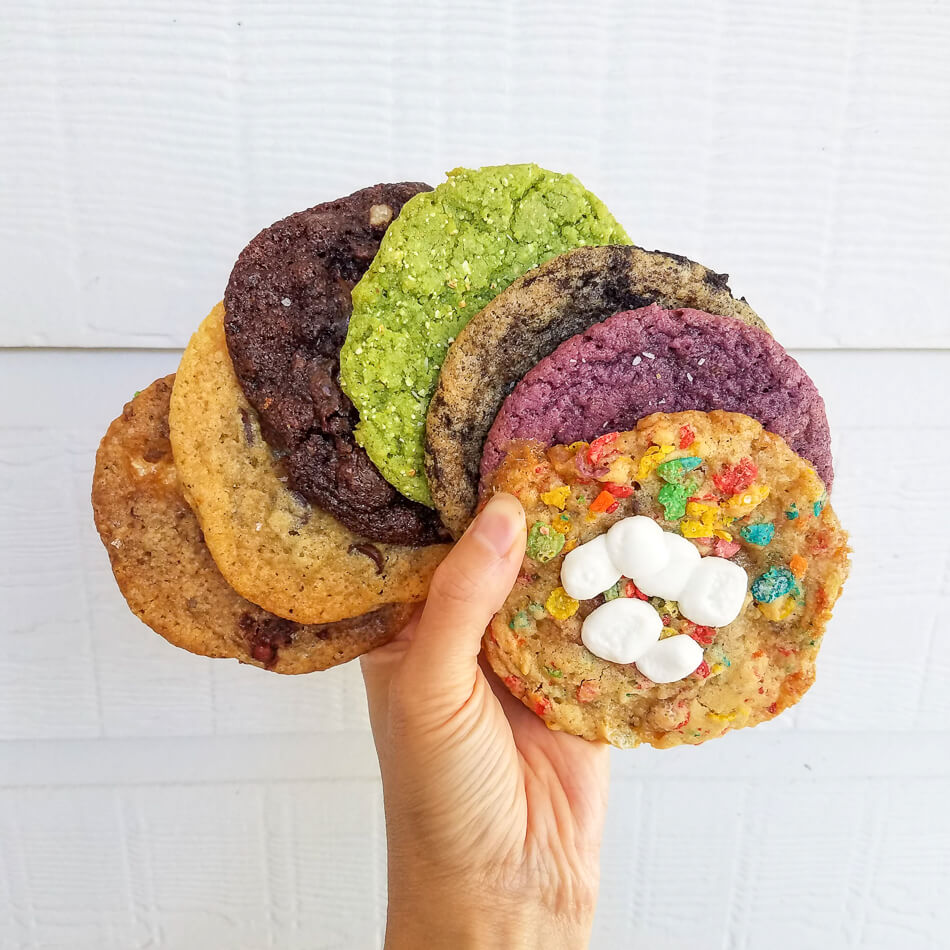What’s it like being Asian American? This post has been a long time coming. It’s been in drafts for years because it’s a very heavy subject, and I hope it conveys my thoughts and feelings clearly. I wanted to publish this because it’s important – for me and the APPI community. I’m also learning along with you. Being Asian American and learning how to accept and support my heritage has been a continuous process. Thank you for listening!

Growing Up Chinese
“Do they understand what I’m saying?” my aunt asked my dad in Chinese when our family arrived at her house in China for a visit.
Thinking my siblings and I didn’t understand Chinese was a fair assumption for my aunt. After all, we were born and raised in the U.S. Like many immigrant families, my parents grabbed onto any opportunity for us to fulfill the American Dream. This American Dream meant we would have a good education, go to college, get an office job (easier and higher paying than a labor-intensive job), get married, have kids, and gain wealth. They thought that for us to become successful, the priority was following the rules and expectations of white suburban life. In a way, being successful was being white or at least being an upstanding citizen imitating American (white) culture.
This is in no way a snub on my parents or any immigrant parents who acted this way. Their actions were out of love and what they could see worked. When given an opportunity for your kids to experience a life you’ve only dreamed of, wouldn’t you do whatever it takes? In coming to a country you know nothing about, wouldn’t you try to fit in and learn local customs to make it an easier transition? And when you hear being a model citizen is the way to get ahead in life, wouldn’t you follow it and teach your kids to do the same? There’s no right or wrong. We all have our learned behaviors.
I felt it too, the strangeness of growing up in two cultures. On top of the woes of trying to fit in and be “cool” as a kid (I’m pretty sure I’m still not cool!), I mispronounced words and wore weird clothes. Santa, the Easter Bunny, and the Tooth Fairy didn’t exist at my house (things my parents never really cared about), so I made up stories about what they would bring me. I threw away lunch I brought to school because my classmates said it smelled funny. I avoided talking to my parents in Chinese in public because of the weird looks and comments. These were the little things that made me feel like an outsider, that being Chinese wasn’t normal and maybe even shameful.
It was hard to live in two cultures, and I grew up thinking I didn’t want to be Chinese because I thought being white meant I would be more normal and more accepted. I told people I was a banana or Twinkie – yellow/Asian on the outside and white on the inside – because I wanted them to know I was one of them. I don’t think I was proud to be Chinese in a lot of ways and that’s a strange realization as an adult. Becoming more American meant giving up being Chinese.

Proud to be Asian American
So…now it’s cool to be Asian. The shortlist? All the Asian food. Korean skincare and beauty. Boba drinks. BTS and BlackPink.
Being proud means feeling a deep connection with others who have grown up as Asian Americans and recognizing the struggle of others. Jon Chu, the director of Crazy Rich Asians, talks about this in his letter to Coldplay asking for rights to a song he used in the movie. It’s being drawn to learn the Chinese traditions and explore the Chinese recipes that I took for granted as a kid. It’s celebrating Asian joy by honoring our history and cheering on Asian accomplishments.
Becoming proud has been a difficult pivot when I’ve lived most of my life thinking I needed to be something else. I’ve begun the long work of accepting who I am and letting go of all the lies I built in my mind. It involves a lot of retraining my brain to be proud of what being Chinese means to me. It’s all part of the process of growing up – you see your past in a new light and learn from it – and it’s a delicate and hard process!
Some related media:
- Video: Sesame Street shows that speaking another language is a superpower
- Article: Adopted Korean ponders similar questions

But There’s Racism
At the same time, learning how to be proud to be Asian is dealing with racism.
I’ve experienced racism from the kids on the playground in elementary school to adults today. I like to think that most comments were not hateful, just kids not knowing better or adults never questioning why their comments would be disrespectful. But we live in a time where information is more readily available, people will speak up, and people are tired of having to explain why they are offended.
These comments – like asking where someone is really from – are microaggressions. Microaggressions are indirect, subtle, or unintentional verbal or behavioral discrimination. This article goes deep into the discussion.
More seriously, there is blatant racism – the external voices that tell me being Asian is not something I should be proud of. That Asians can be beaten up without consequence and the violence and hate towards them is not real or that it is warranted because they caused certain things to happen. Or that hate is ok because Asians are different. Racism is present because racists feel superior because of their race, are close-minded and/or uneducated, and are encouraged by others, especially people in power. If you would like to read recent examples of racist accounts, see this post.
White American society has long fought for their own, what they thought was right, was owed, or was earned. It started with land. It continues with culture, policies, and values.
“I imagine one of the reasons people cling to their hates so stubbornly is because they sense, once hate is gone, they will be forced to deal with pain.” – James Baldwin

How to Help the AAPI Community
If you are part of the AAPI community, I feel you, I see you. We stand together.
We can all do more and learn more. I want to be a stronger ally and we can work together to make the world more inclusive. Here are some ways.
Educate Yourself
You don’t have to know or understand it all, but fighting racism means you have to do your part. Unlearning what you’ve been taught or what you grew up with is not fun and actually, it is emotional and uncomfortable. Learning and remembering can be hard, too. It’s hard being told you’ve hurt someone’s feelings when it wasn’t intentional, but it’s hard being continuously faced with racism.
Some resources:
- Who is Asian American? See this graph!
- History of Anti-Asian Hate in America from Vox and The Skimm
See Color
When you see and recognize color – our heritage – you can understand where we’re coming from and celebrate our differences. Read Asian American literature, consume media (films, music, TV shows, podcasts) featuring Asian voices, learn about Asian cuisines, and support Asian creatives. See the beauty and honor the representation.
Some resources:
- Equity at the Table – learn about professionals in the food industry through this database
- Books by Asian American Authors
- Make Chinese dishes through this food blog – The Woks of Life
- Ty some of these Asian American Cookbooks

Speak Up
Most people don’t like confrontation and they rationalize not getting involved because they think maybe they can’t make things better or maybe it’s not their place. Be empowered to stand up for someone who is being confronted by someone hateful or inappropriate. Stop things before they escalate. You could save a life or at the least, give a reminder that the world isn’t a terrible place. Learn about bystander intervention.
Donate Money
There are many organizations doing big work to bring change, aid, and education. Here are two:
Support AAPI Businesses and Creatives
When it comes to food in Austin, check out some of my blog posts:
- Asian Desserts in Austin
- Chinese Dumplings in Austin
- Coffee Tasting at Greater Goods Coffee Roasters
Here are some of my other favorite companies in Austin:



Thank you for reading and taking in what I had to share. Many organizations and companies support the cause with their voice and dollars, and I encourage you to do the same!
P.S. A few years ago, I wrote about why representation matters. Read it here!



